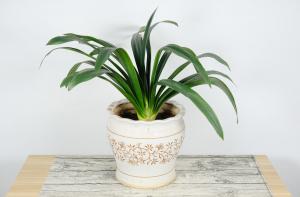Where Not to Plant Willow Trees
Willow trees are beautiful, elegant, and soothing to look at. However, they are not suitable for every location. Knowing where not to plant willow trees is essential to avoid problems with the tree's growth and health. In this article, we will discuss areas you should avoid when planting willow trees.
1. Near Sewer Lines and Septic Systems
Willow trees have invasive root systems that can disrupt sewer lines and septic systems. Roots can grow into pipes and cause blockages or even break the lines, resulting in costly repairs. It's best to avoid planting willow trees near these systems to avoid any potential problems in the future.
2. On Slopes and Hillsides
Willow trees need a lot of water, and planting them on slopes or hillsides can result in water runoff. This can cause erosion, making it difficult for the tree to take root and thrive. Moreover, if planted on a slope, the tree could easily topple over in the event of a strong wind or storm. It's best to choose a flat, stable area if you plan to plant a willow tree.
3. Near Buildings or Structures
Willow trees have brittle wood that can break easily during strong winds or storms. If planted near buildings or structures, the falling branches or limbs could cause damage to the property or even injure people. It's crucial to keep willow trees at least 20 to 30 feet away from buildings and structures and prune them regularly to minimize the risk of falling debris.
4. In Small Spaces
Willow trees can grow up to 80 feet tall and spread more than 50 feet wide, depending on the species. Planting a willow tree in a small space can lead to overcrowding, making it difficult for the tree to develop properly. It's essential to choose a spacious area to provide ample room for the tree to grow and thrive.
5. In Areas with Poor Drainage
Willow trees require moist and well-draining soil to thrive. Planting a willow tree in an area with poor drainage can cause root rot, which is fatal to the tree. If you're unsure about the soil quality in your area, it's essential to test it before planting a willow tree.
Conclusion
Willow trees are a beautiful addition to any landscape, but they require careful consideration when planting. Areas to avoid when planting willow trees include near sewer lines and septic systems, on slopes and hillsides, near buildings or structures, in small spaces, and areas with poor drainage. By avoiding these locations, you can ensure that your willow tree grows and thrives healthily and without any problems.

 how many times do yo...
how many times do yo... how many planted tre...
how many planted tre... how many pine trees ...
how many pine trees ... how many pecan trees...
how many pecan trees... how many plants comp...
how many plants comp... how many plants can ...
how many plants can ... how many plants and ...
how many plants and ... how many pepper plan...
how many pepper plan...






























